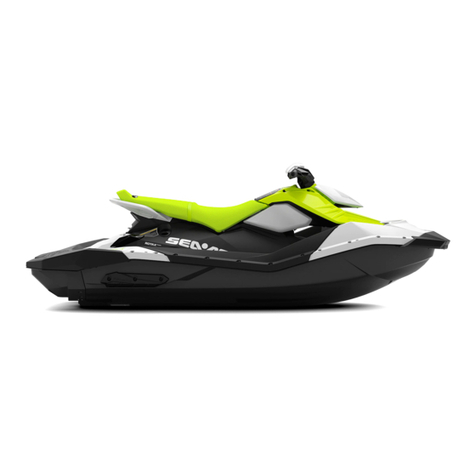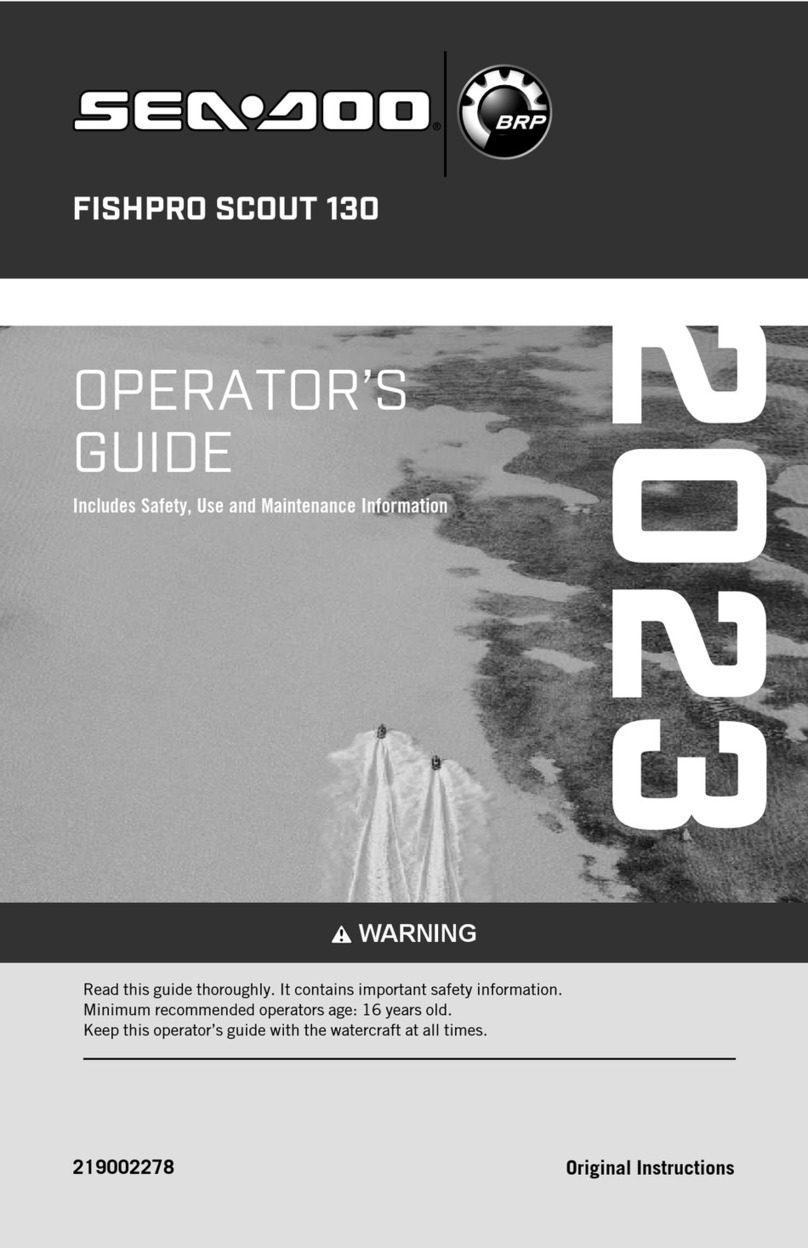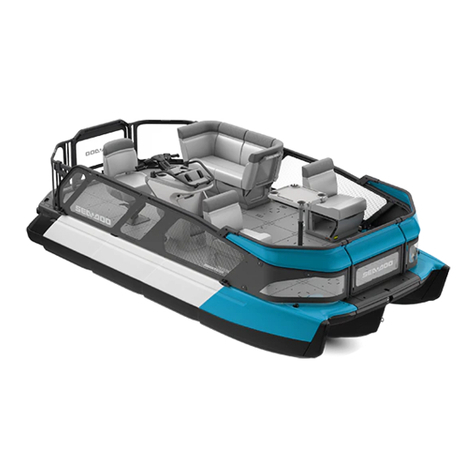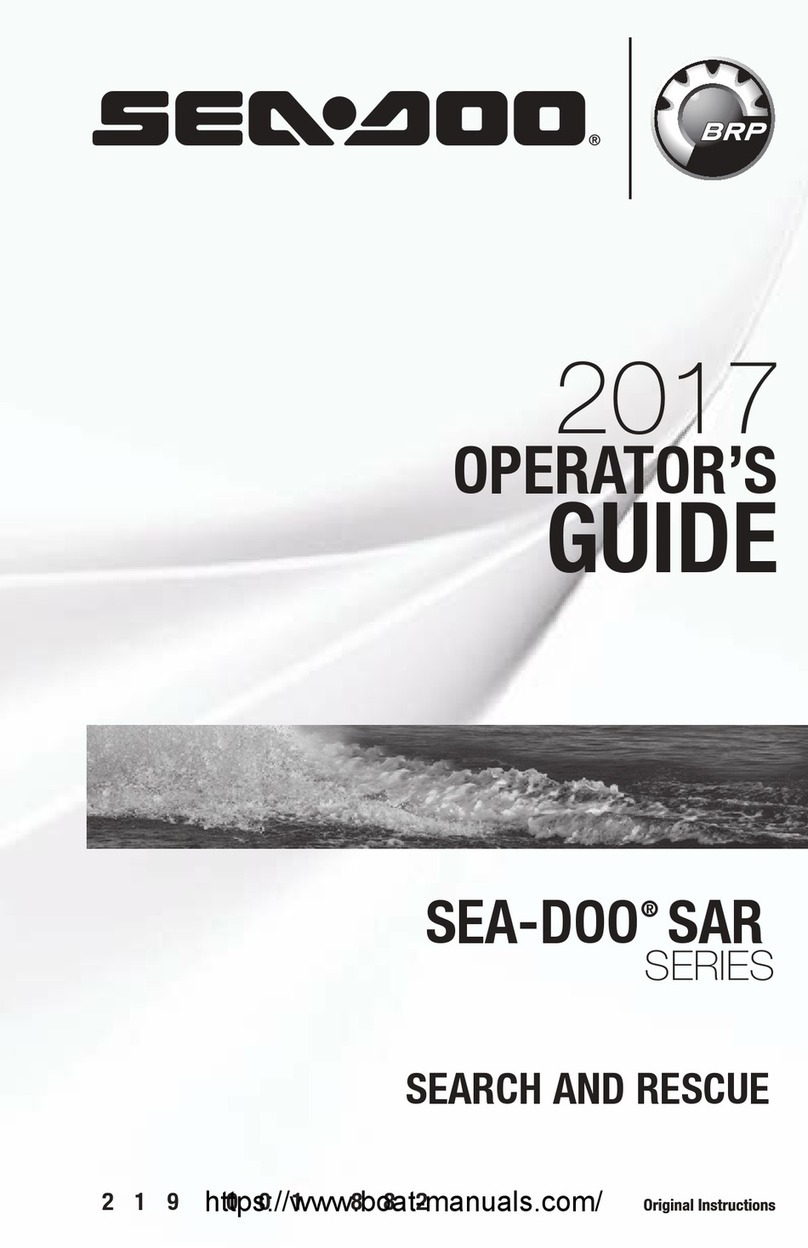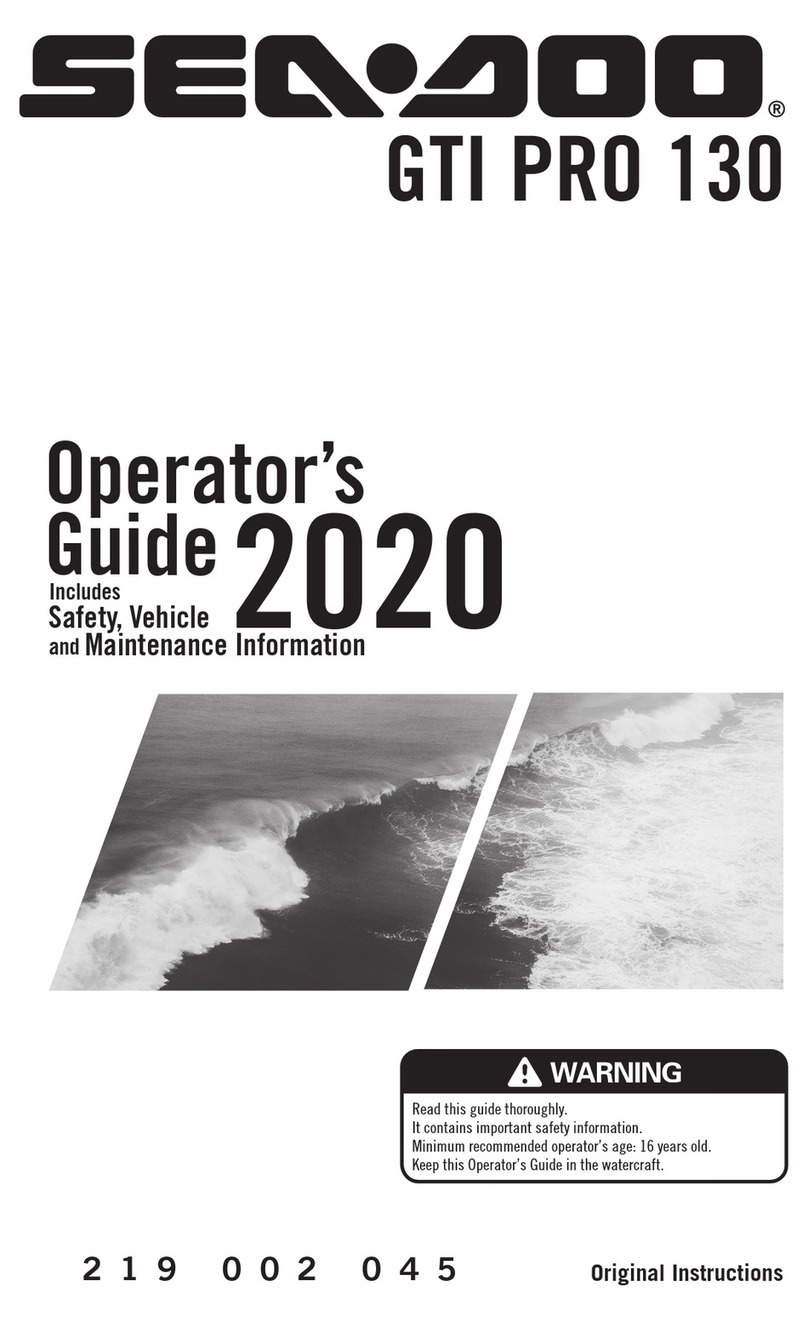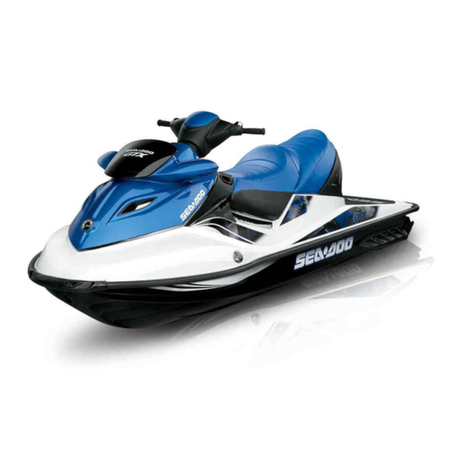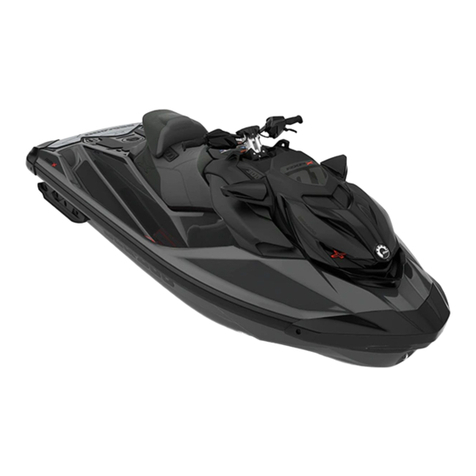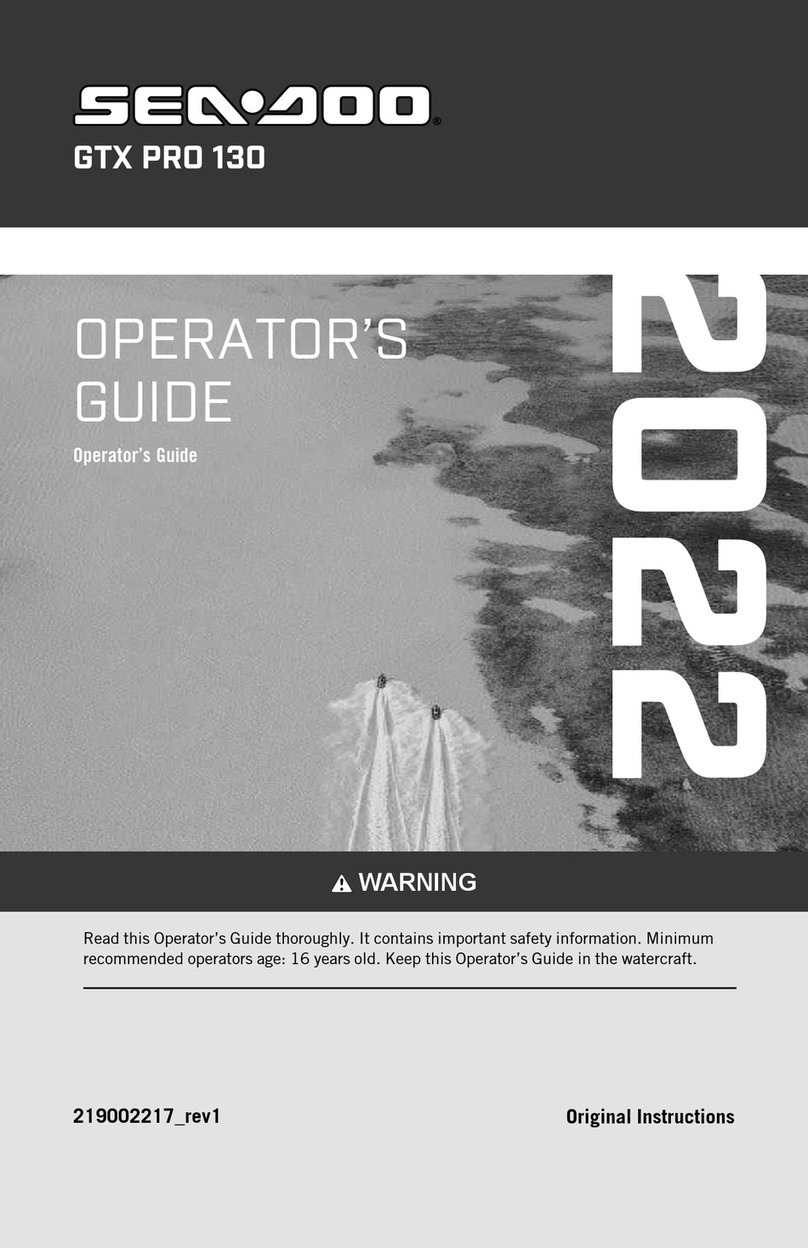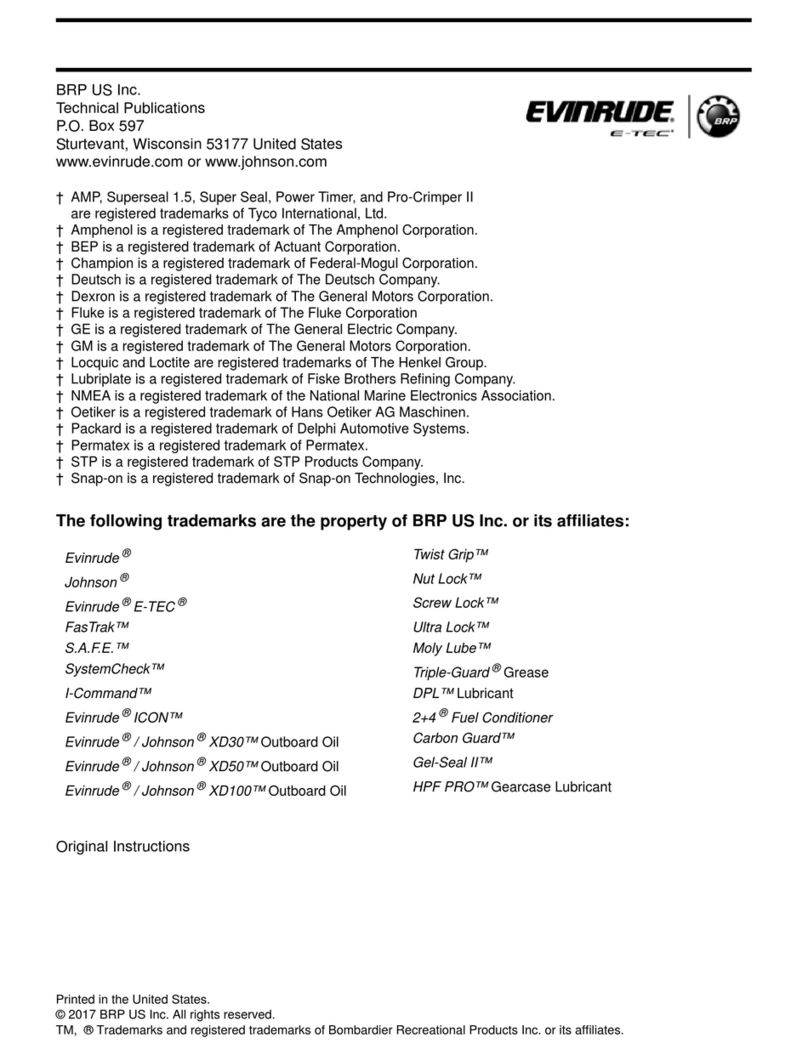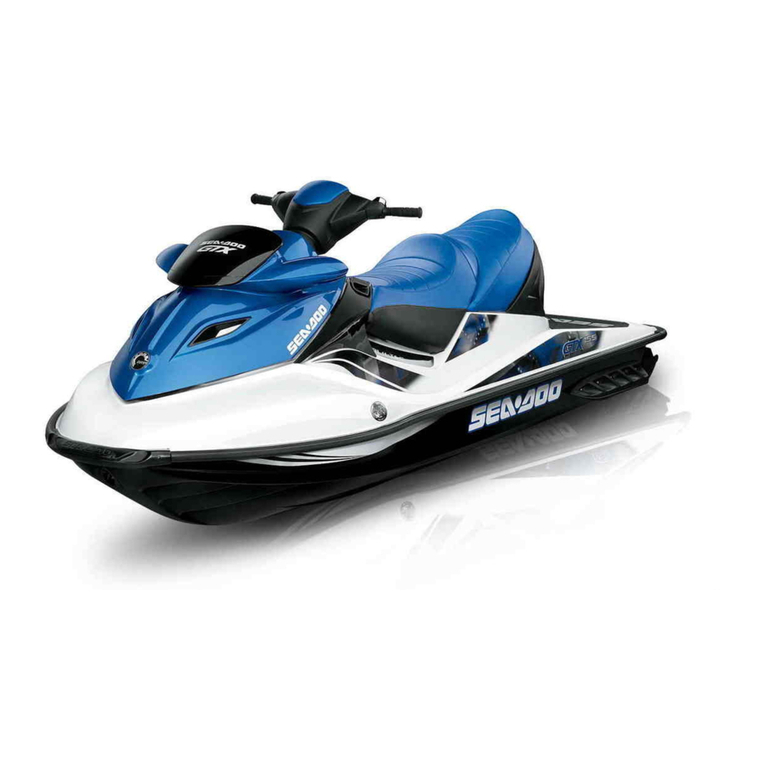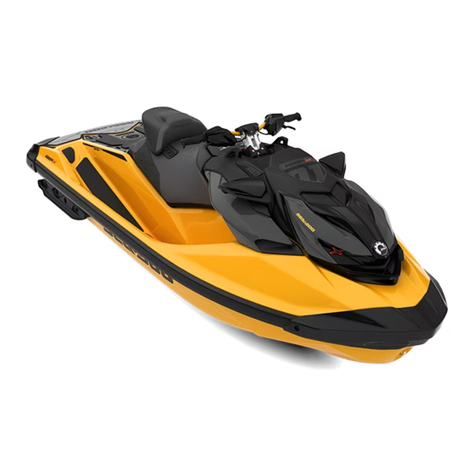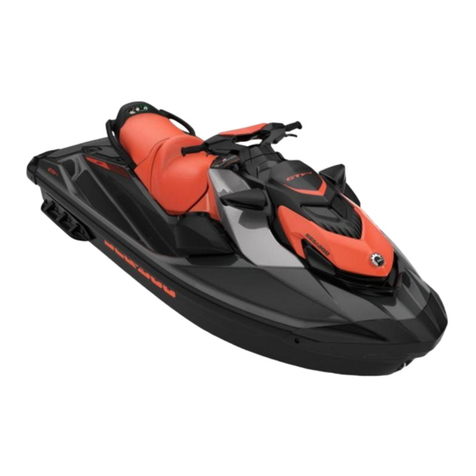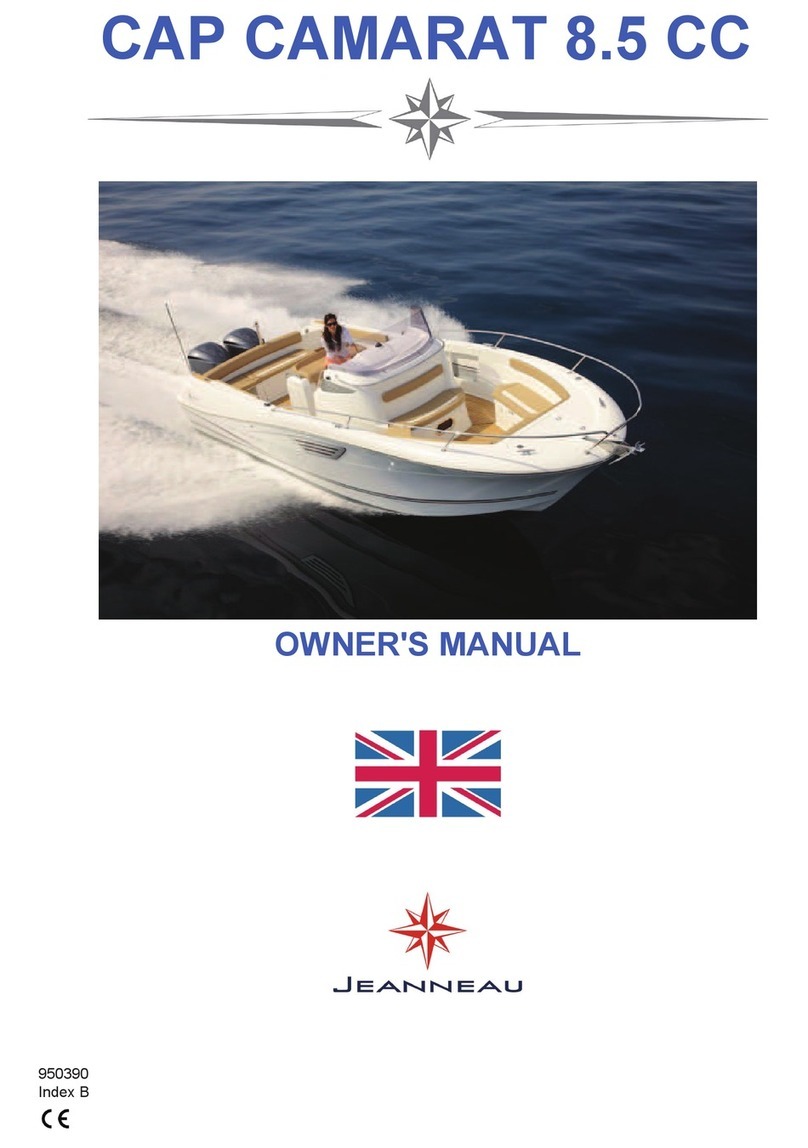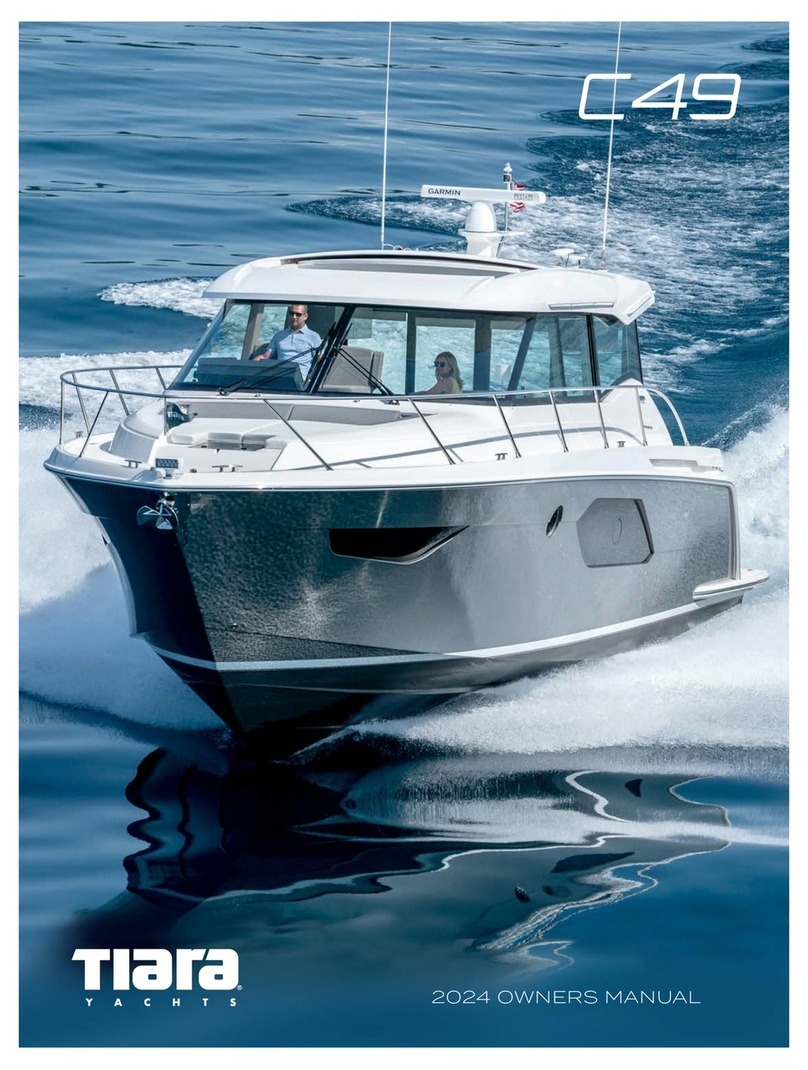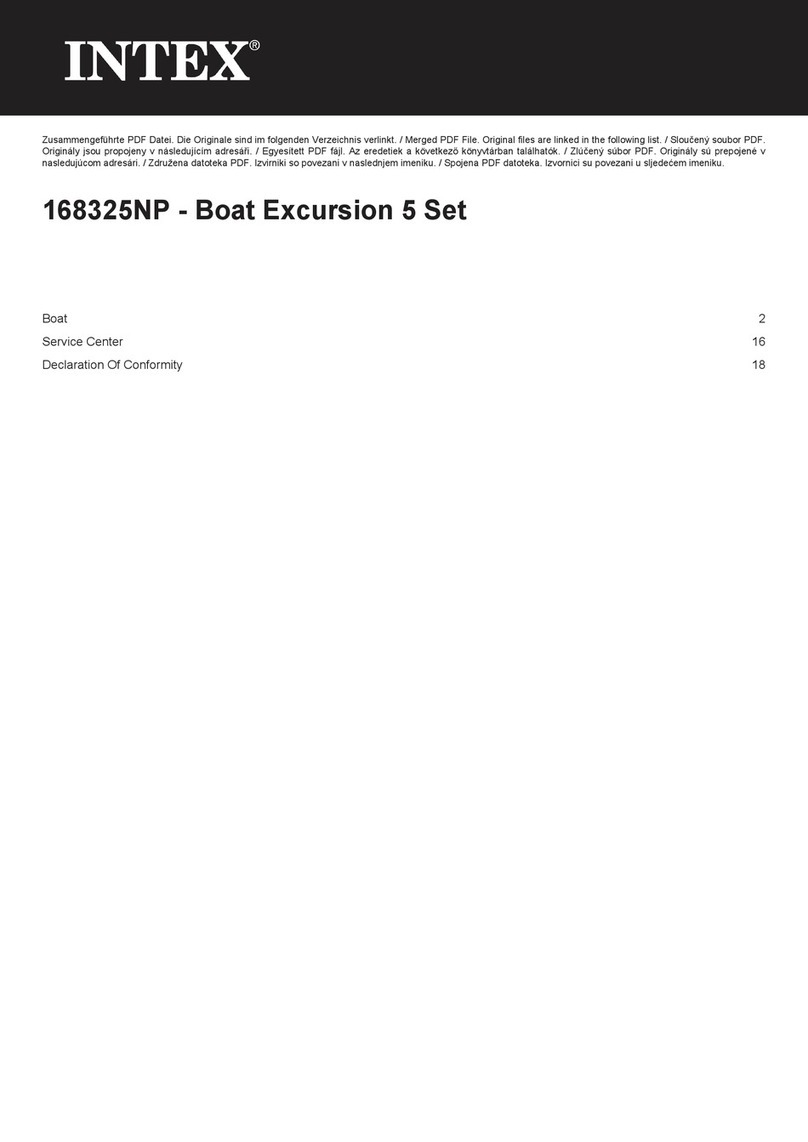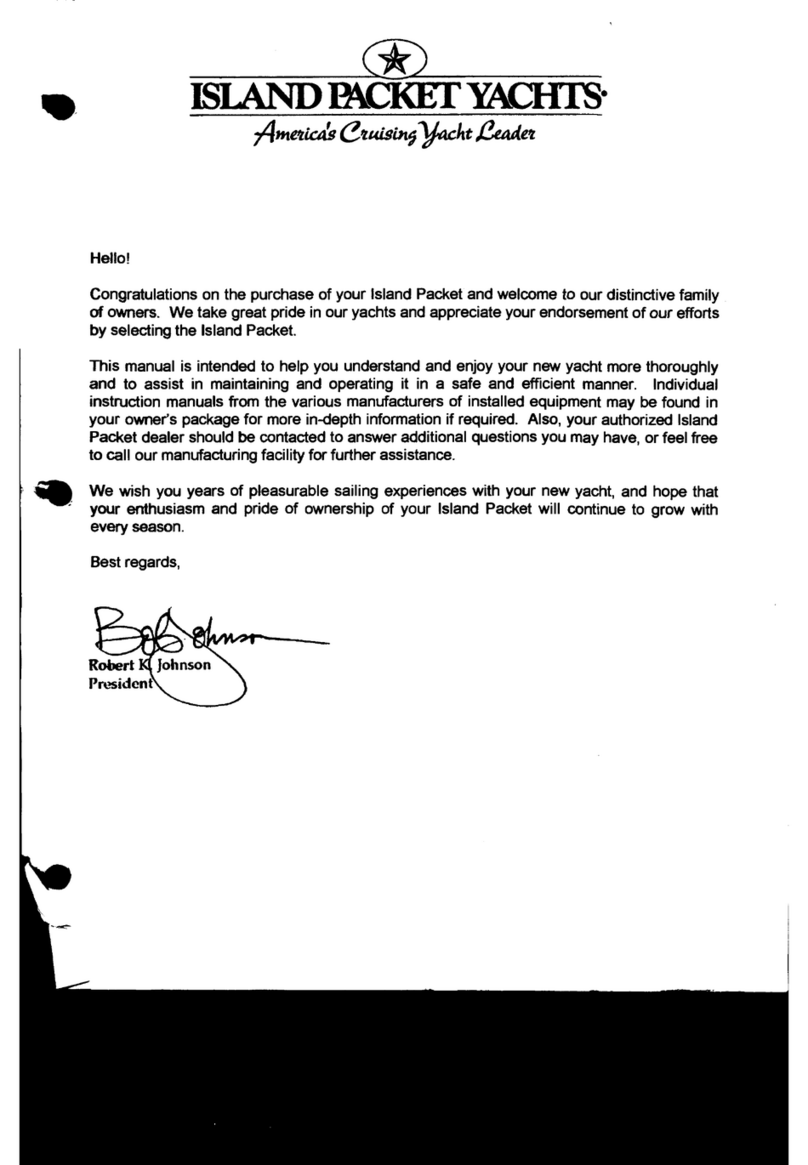
FOREWORD
Know Before you Go
To learn how to reduce the risk for you
or other persons being injured or killed,
read the following sections before you
operate the watercraft:
–
SAFETY INFORMATION
–
WATERCRAFT INFORMATION
.
Read and understand all safety labels
on your watercraft and watch atten-
tively your
SAFETY VIDEO
located at
https://www.sea-doo.com/safety.
Failure to follow the warnings con-
tained in this Operator's Guide can
result in serious injury or death.
BRP highly recommends that you take
a safe boating course. Please check
with your dealer or local authorities for
availability in your area.
In certain areas, an operator compe-
tency card is mandatory to operate a
pleasure craft.
WARNING
Get familiar with this PWC; it may
exceed the performance of other
PWCs you have ridden.
Safety Messages
This Operator’s Guide utilizes the fol-
lowing symbols and words to empha-
size particular information:
The safety alert symbol indicates
a potential injury hazard.
WARNING
Indicates a potential hazard which,
if not avoided, could result in seri-
ous injury or death.
CAUTION Indicates a poten-
tially hazardous situation which, if
not avoided, could result in minor or
moderate injury.
NOTICE Indicates an instruction
which, if not followed, could se-
verely damage watercraft compo-
nents or other property.
About this Operator's
Guide
This Operator's Guide has been pre-
pared to acquaint the owner/operator
or passenger with this personal water-
craft and its various controls, mainte-
nance and safe riding instructions.
Keep this Operator's Guide in the wa-
tercraft as you can refer to it for oper-
ation, instructing others, maintenance
and troubleshooting.
Note that this guide is available in sev-
eral languages. In the event of any dis-
crepancy, the English version shall pre-
vail.
Ifyouwanttoviewand/orprintan
extra copy of your Operator's Guide,
simply visit the following website
www.operatorsguides.brp.com.
The information contained in this doc-
ument is correct at the time of publica-
tion. However, BRP maintains a pol-
icy of continuous improvement of its
products without imposing upon itself
any obligation to install them on prod-
ucts previously manufactured. Due
to late changes, some differences be-
tween the manufactured product and
the descriptions and/or specifications
in this guide may occur. BRP reserves
the right at any time to discontinue or
change specifications, designs, fea-
tures, models or equipment without
incurring any obligation upon itself.
This Operator's Guide should remain
with the watercraft when it's sold.
2_______________
https://www.boat-manuals.com/
